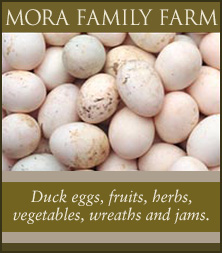MILK
- Make sure the milk you use for this cheese is NOT ULTRA- PASTEURIZED.
- Homogenized milk will work fine.
- Fresh farm milk will also work well but we encourage you to make first batch of cheese with 1 gallon of store bought whole milk.
- Low-fat milk will work but the cheese will be drier and less flavorful.
YOU WILL NEED:
- 6 – 8 quart stainless steel pot – aluminum or cast iron will not work
- Stainless steel or strong plastic slotted spoon
- Two-quart microwave-safe mixing bowl
- Measuring spoons
- Thermometer which will clearly read between 80 – 120°F.
PREPARE YOUR WORK AREA:
- Do not prepare any other food while you are making cheese.
- Put all food products away.
- Move all sponges, cloths, and dirty towels away from your work surface, and wipe your sink and stove with soap and water.
- Finally, use an antibacterial cleaner to wipe down all surfaces.
PROCESS:
- Crush 1/4 tablet of rennet and dissolve in 1/4 cup of cool, unchlorinated water and set aside to use later.
- Add 1.5 teaspoons of citric acid, diluted in 1 cup cool water, to 1 gallon of cold milk and stir well.
- Add the citric acid solution to the empty cold pot.
- Now, pour cold milk into your pot quite quickly to mix well with the citric acid. This will bring the milk to the proper acidity to stretch well later.
- Next, heat this milk to 90°F. As you approach 90°F, you may notice your milk beginning to curdle slightly. due to acidity and temp. (NOTE: If having problems with milk forming a proper curd, you may need to increase this temperature to 95° or even 100°F next time.)
- When the milk reaches 90°F, remove the pot from the burner and slowly add your rennet (which you prepared in the previous step) to the milk. Stir in a top to bottom motion for approximately 30 seconds or until you feel it thickening, then stop. It’s very important to NOT over-stir.
- Cover the pot and leave it undisturbed for 5 minutes.
- Check the curd, it will look like custard, with a clear separation between the curds and whey. If too soft or the whey is milky, let set for a few more minutes.
- Cut the curds into a 1″ checkerboard pattern (as in photos above) and, if a drier cheese is desired, carefully cut and stir this curd to release more whey.
- Place the pot back on the stove and heat to 105°F, while slowly stirring the curds with your ladle. (If you will be stretching the curds in a hot water bath heat to 110°F in this step.)
- Take off the burner and continue slowly stirring for 2-5 minutes. (More time will make a firmer cheese.)
- With a slotted spoon, scoop curds into a microwave-safe bowl. (If the curd is too soft at this point let sit for another minute or so.)
- You will now press this curd gently with your hand, pouring off as much whey as possible. Reserve this whey to use in cooking.
FOR MICROWAVE HEATING:
- Next, microwave the curd on HIGH for 1 minute. You will notice more whey has run out of the curd. Drain off all whey as you did before. Quickly work the cheese with a spoon or your hands until it is cool enough to touch (rubber gloves will help since the cheese is almost too hot to touch at this point.)
- Microwave 2 more times for 35 seconds each, and repeat the kneading as in the last step. Drain off all of the whey as you go. Begin stretching and pulling the curd like taffy.
FOR STOVETOP STRETCHING:
- Once the curd is removed from the whey, heat whey to 170°. Immerse the curd in the hot whey, either in a strainer, colander, or a slotted spoon until it begins to melt.
- Remove from the hot whey and begin to stretch and knead it. If it begins to break while you stretch, dunk back in the hot liquid. Stretch and pull the curd-like taffy, aiming for a smooth, ribbon-like texture. The more stretching and pulling, the firmer your cheese will be. For a soft, tender, creamy cheese, don’t overwork the curd!
SALTING:
- You can either sprinkle salt into the curd while you stretch it or heavily salt the whey before you dunk the curd.
- Form it into a ball and drop it into ice water to cool and refrigerate. It is ready to eat when it cools.
- When cold you can wrap it in plastic wrap and it will last for several days but is best when eaten fresh.
OPTIONS:
- A substitution of reconstituted dry milk powder and cream is a great option if you can not find the right type of milk
- Lipase may be added to the milk to provide a typical Italian cheese flavor
- If you want a softer texture, do not let the curd set as firm and work less when draining and kneading, this will make a moister cheese.
SOURCE: Recipe courtesy of Mountain Feed and Farm Supply. Cheese-making supplies are available from Mountain Feed and Farm Supply.



























